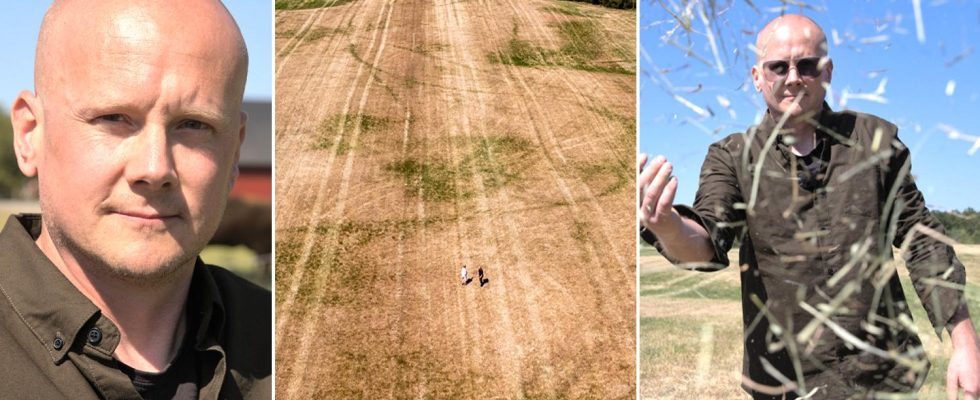The extreme heat from 2018 is back – but 2023 is tougher so far, says farmer Henrik Gudmundsson.
– Due to the lack of feed, I have been forced to send animals to slaughter earlier than planned.
It is quiet and peaceful over the fields in Klippan outside Ängelholm – some would even call it peaceful. But something is not right. Henrik Gudmundsson’s grass field in the Scanian countryside does not look like it usually does.
– As you can see, it is extremely patchy, says Henrik and points out over one of his large fields.
It is hard not to draw parallels to the summer of 2018 – the year when the table fans sold out in the shops and forest fires became part of the emergency services everyday.
In 2023, five years later, we face the heat and drought again.
– Here at my place it is already worse than the summer of 2018, says farmer Henrik Gudmundsson.
230 fewer hay bales
The sunburned and dried grass is light brown – except for a few green areas that show what it should really look like. A few weeks after the first harvest, the green grass usually sways in the wind at this time of day.
– The fodder harvest normally yields 350 round bales like this, says Henrik, looking at the white mountain of stacked bales.
– This year’s first harvest yielded no more than 117 pieces.
In Henrik’s yard, a herd of cows stands and huddles by a tub filled with water. The smell of farmhouse and the sound of buzzing flies frame the stereotypical image of the countryside that many have.
– It is very dry and of course it is very difficult for the animals. They often lie in the shade and preferably near where they have water to drink, says Henrik and continues:
– If this heat persists, it can create problems such as the pregnancy not forming as it should. Of course, the animals generally feel worse when it gets this hot.
The feed shortage has already forced the farmer Henrik to get rid of animals prematurely.
– It is of course sad, but due to the lack of fodder I have been forced to send animals to slaughter earlier than they really should, in order to work a little preventively.
LRF has had several crisis meetings
This week, the Confederation of Agricultural Farmers (LRF) has had several crisis meetings to see how they can help the country’s farmers.
Roger Gustafsson, who is chairman of LRF Sydost, says to TV4 that, among other things, they can help with feed brokers and bank contacts.
– We can help with authority contacts and see if it is possible to get a dispensation to harvest certain protection zones to get fodder, he tells TV4.
“Then more animals need to be slaughtered”
Midsummer Eve is around the corner but there is hardly a drop of rain in sight. If it continues like this, it will have major consequences for the animals on the farm.
– The worst thing that could happen is that the rain doesn’t come. Then more animals will have to be slaughtered and it’s not just me.
– There will be smaller harvests if the weather does not change soon. Less food, less feed, fewer animals… Yes, less of everything we want more of.
What does the perfect summer look like?
– The dream scenario is that it starts to rain now, says Henrik and laughs.
Not a cloud is visible in the clear blue sky above the farm, but Henrik still seems a little hopeful.
– That would be the best, we’ll see what happens.
